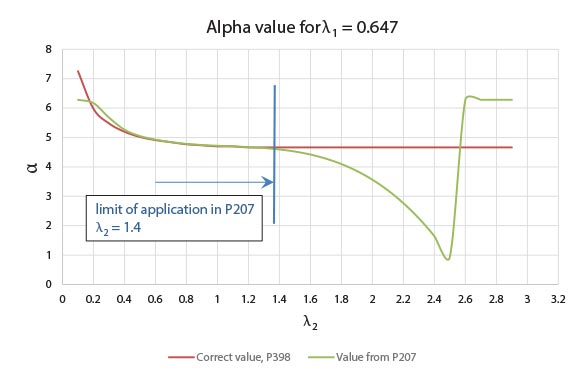Technical
AD 363: Geotechnical actions on structures – choice of partial factors
BS EN 1990:2002, Eurocode – Basis of structural design, sets out rules for the determination of design values of the effects of actions on structures. The rules involve the application of factors for actions, the values of which depend on the design situation. Recommended values of factors at ULS are given for the STR/GEO design situations in Tables A2.4(B) and A2.4(C), referred to as ‘Set B’ and ‘Set C’ respectively. The Advisory Desk has been asked on several occasions, and particularly for structures subject to geotechnical actions, “When should ‘Set B’ and ‘Set C’ be used?”. This Note offers a response to that question.
For the design of structural members not involving geotechnical actions (e.g. beams and columns above ground), Set B should always be used, as advised in clause A.1.3.1(4) of BS EN 1990. (The values of the Set B factors are greater than those in Set C.) This means the use of expressions 6.10 or 6.10a and 6.10b with the familiar factors applied to the permanent and variable actions.
For the design of structural members that do involve geotechnical actions (e.g. foundations, retaining walls, piles etc.), clause A.1.3.1(5) of BS EN 1990:2002 states that one of three alternative approaches (referred to as Approach 1, Approach 2 and Approach 3) should be used; these Approaches lead to different applications of Set B and Set C factors. The choice of approach is left to the National Annex. The UK National Annex to BS EN 1990:2002 recommends the use of Approach 1, which applies “in separate calculations design values from [Set C] and [Set B] to the geotechnical actions as well as the other actions on/from the structure”. It is this statement that appears to cause confusion.
For the design of structures involving geotechnical actions, the design effects depend on geotechnical material parameters, as well as on the design actions and for such design situations, reference needs to be made to BS EN 1997-1. For Approach 1, clause 2.4.7.3.4.2 of that Standard is applicable. The clause explains that for verification two combinations of sets of partial factors (on actions, on materials and on resistances) need to be considered (the more onerous governs the design). In one combination, Set B factors (referred to in BS EN 1997-1 as Set A1) are applied to all permanent and variable actions (including geotechnical actions) and ‘Set M1’ factors are applied to geotechnical material properties. In the other, Set C factors (referred to as Set A2) are applicable to the permanent and variable actions and ‘Set M2’ factors to the material properties.
The M1 and M2 sets of factors generally lead to lesser and greater values respectively of the effects of actions due to soil pressure. Since Approach 1 combines A1 (Set B) with M1 and A2 (Set C) with M2, the first combination will usually be more onerous where the actions on the structure dominate and the second combination will be more onerous where the soil pressures dominate (this is effectively acknowledged by the final sentence of the definition of Approach 1 in BS EN 1990, A.1.3.1(5)).
It may be noted that the selection of Approach 1 in the UK NA to BS EN 1990 is mirrored by the selection of that Approach in the UK NA to BS EN 1997-1; the latter document gives more extensive guidance on the application of partial factors for structures involving geotechnical actions. It may also be noted that, when using Set C factors, only expression 6.10 is applicable.
Contact: Martin Heywood
Tel: 01344 636525
Email: advisory@steel-sci.com










